Find Help
More Items From Ergsy search
-
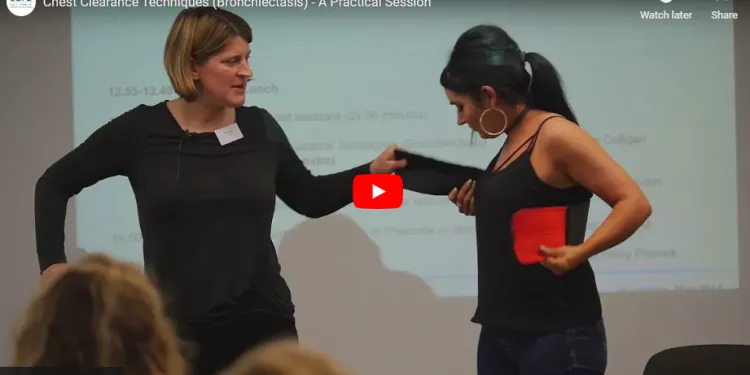
Chest clearance techniques
Relevance: 100%
-

Problems swallowing pills: Lean forward technique | NHS
Relevance: 31%
-

Chest infection: what should I do?
Relevance: 30%
-

Dorothy's Story (Falls/Chest Infection)
Relevance: 28%
-
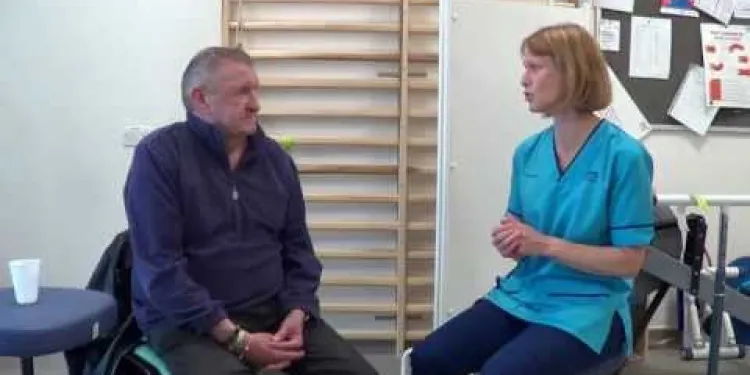
Clearing Your Chest with Breathing Exercises
Relevance: 28%
-

Is it possible to have a heart attack without chest pain?
Relevance: 26%
-

Breathlessness after COVID-19 - helpful techniques
Relevance: 25%
-

What techniques are used for hair transplants in Turkey?
Relevance: 23%
-
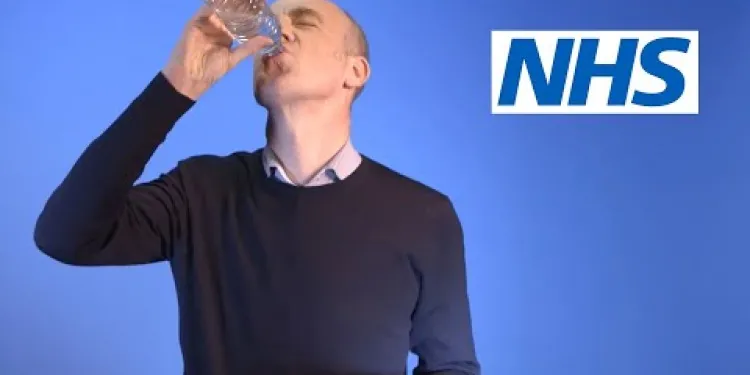
Problems swallowing pills: Pop bottle technique | NHS
Relevance: 23%
-
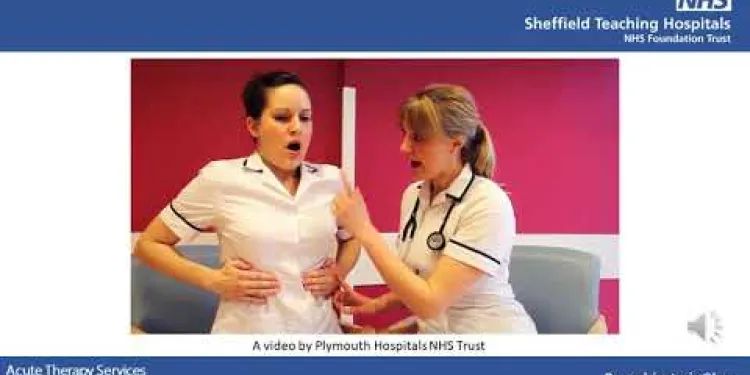
Bronchiectasis class presentation v2
Relevance: 19%
-
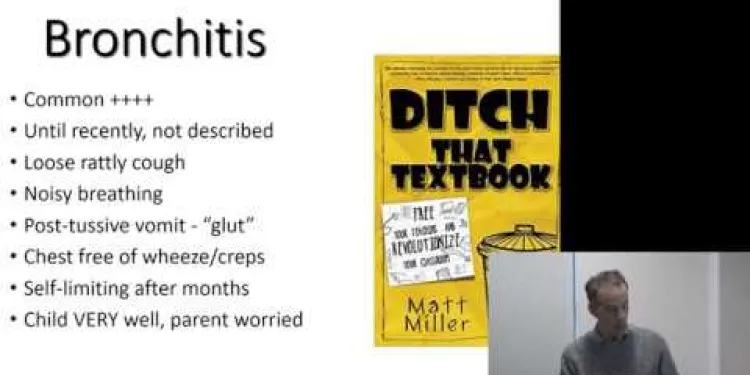
Bronchiolitis and chest infections in young children - Prof Steve Turner
Relevance: 18%
-

Can air physiotherapy prevent respiratory infections?
Relevance: 18%
-

How does air physiotherapy work?
Relevance: 17%
-

Is a prescription needed for air physiotherapy?
Relevance: 16%
-

Is chest pain always a sign of a heart attack?
Relevance: 14%
-

Heart Attack Symptoms - Help Us Help You | NHS
Relevance: 12%
-
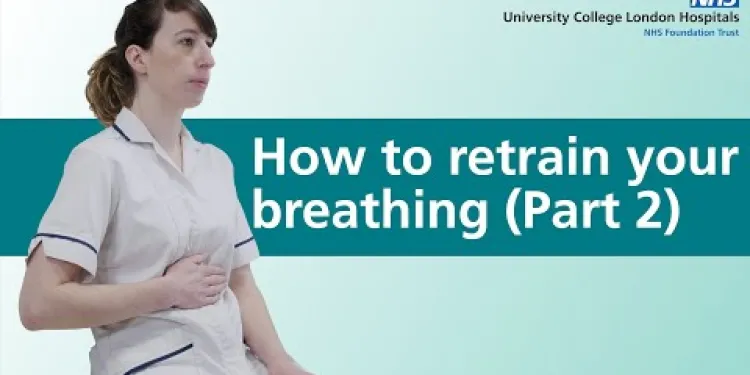
How to retrain your breathing | Part 2 | Asthma, long covid or breathlessness
Relevance: 12%
-

Who can benefit from air physiotherapy?
Relevance: 12%
-

Heart Attack Symptoms - Peter Dale (Tubes) | NHS
Relevance: 12%
-
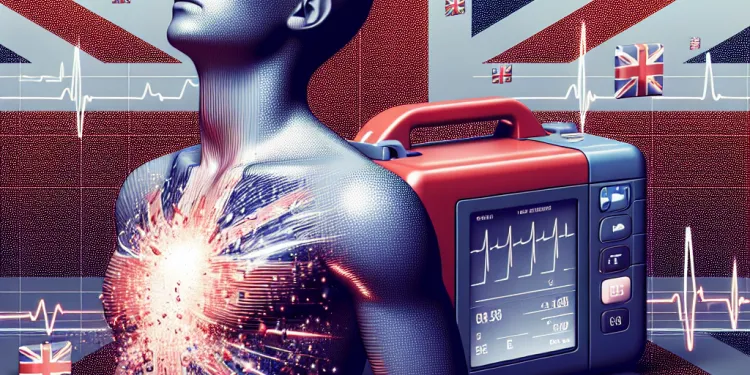
Can you use a defibrillator on a wet person?
Relevance: 12%
-

How can I differentiate between heartburn and a heart attack?
Relevance: 11%
-

NHSGGC - Respiratory Physiotherapy Service: Self-Management
Relevance: 11%
-

Can stress cause asthma symptoms?
Relevance: 11%
-

How long do heart attack symptoms last?
Relevance: 11%
-

Does air physiotherapy involve medication?
Relevance: 10%
-

How often should one perform air physiotherapy?
Relevance: 10%
-
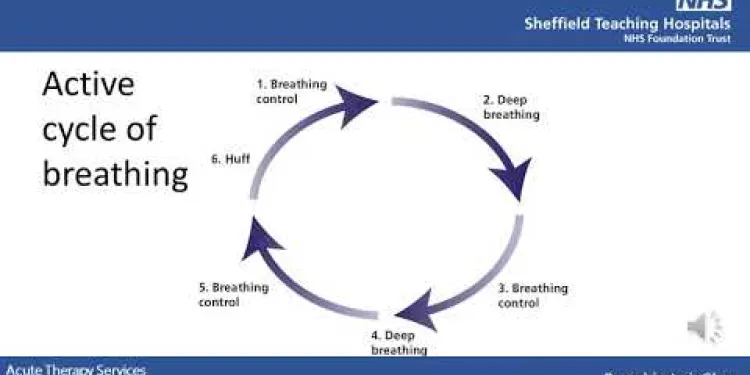
Bronchiectasis Class
Relevance: 10%
-

What is angina and how is it treated?
Relevance: 10%
-
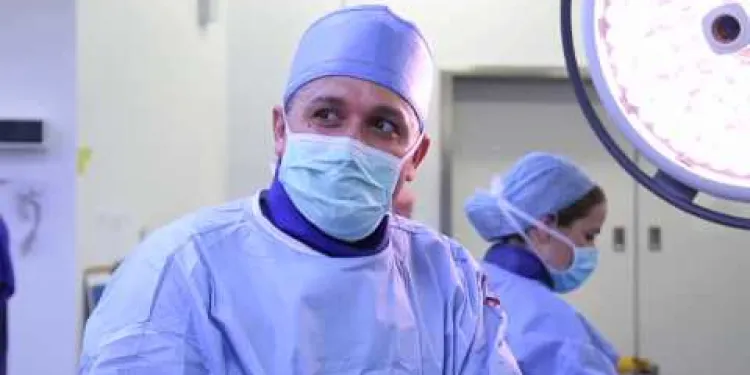
Repairing complex aortic aneurysms
Relevance: 10%
-

Heart Attack Symptoms - Peter Dale (Tubes) | NHS - BSL version
Relevance: 10%
-

Are there any exercises involved in air physiotherapy?
Relevance: 10%
-

Can heart attack symptoms vary by age?
Relevance: 10%
-

Can women have different heart attack symptoms than men?
Relevance: 9%
-

Long COVID - Managing Breathlessness
Relevance: 9%
-

Coronary Bypass Grafting (CABG)
Relevance: 9%
-

Heart Attack Stories | NHS
Relevance: 9%
-

What topics are covered in a first aid course?
Relevance: 9%
-

Are heart attack symptoms different for people with diabetes?
Relevance: 9%
-

BSL - How to deal with panic attacks
Relevance: 9%
-

Are Concussions common in Rugby?
Relevance: 9%
Chest Clearance Techniques
Introduction to Chest Clearance
Chest clearance techniques are essential for managing respiratory conditions that lead to excess mucus production, such as cystic fibrosis, chronic obstructive pulmonary disease (COPD), and bronchiectasis. These methods help in loosening and removing mucus from the airways, making it easier to breathe and reducing the risk of infections.
Active Cycle of Breathing Techniques (ACBT)
The Active Cycle of Breathing Techniques (ACBT) is a commonly used method in the United Kingdom. It involves a cycle of breathing exercises, including controlled breathing, thoracic expansion exercises, and forced expiration techniques. This series of exercises helps to loosen and clear mucus effectively.
Postural Drainage
Postural drainage uses gravity to help drain mucus from specific areas of the lungs. Patients are positioned in such a way that the affected part of the lung is higher, allowing mucus to drain naturally. This technique is often combined with other methods such as chest percussion or vibration.
Chest Percussion and Vibration
Chest percussion involves clapping the chest with cupped hands to loosen mucus, while vibration is performed using hands or a mechanical device to gently shake the chest wall. These techniques help to dislodge mucus from the airways so it can be expelled more easily.
Positive Expiratory Pressure (PEP) Therapy
Positive Expiratory Pressure (PEP) therapy involves breathing out through a device that provides resistance, helping to keep the airways open and promote mucus clearance. PEP devices are widely available and can be used at home, making them a convenient option for patients in the UK.
High-Frequency Chest Wall Oscillation (HFCWO)
High-Frequency Chest Wall Oscillation (HFCWO) uses a mechanical vest that vibrates at a high frequency, helping to loosen and move mucus towards the larger airways where it can be expelled. This method is particularly beneficial for patients with complex respiratory conditions.
Conclusion
Implementing chest clearance techniques is crucial in managing respiratory health and improving quality of life for individuals with chronic respiratory conditions. Patients should work closely with healthcare professionals to determine the most effective techniques for their specific needs. Regular practice of these methods can significantly enhance mucus clearance and overall lung function.
Chest Clearance Techniques
What is Chest Clearance?
Chest clearance is a way to help people who have too much mucus in their lungs. This can happen if you have an illness like cystic fibrosis or COPD. These ways help you breathe easier by getting rid of the mucus. It also helps stop infections.
Ways to Clear Your Chest
Active Cycle of Breathing Techniques (ACBT)
Active Cycle of Breathing Techniques (ACBT) is often used in the UK. It means doing special breathing exercises. These exercises help to make mucus loose and get it out of your chest. It is like a cycle or pattern of breathing.
Postural Drainage
Postural drainage uses gravity to help move mucus out of your lungs. You lie down in special ways so the mucus can come out easier. Sometimes you use this with other ways like tapping or vibrating your chest.
Chest Percussion and Vibration
Chest percussion means tapping your chest with your hands to loosen mucus. Vibration uses hands or a machine to shake your chest gently. These help to move mucus so you can cough it out.
Positive Expiratory Pressure (PEP) Therapy
PEP therapy uses a special tool to help you breathe out. It keeps your airways open and helps clear mucus. You can use PEP devices at home. They are easy to find in the UK.
High-Frequency Chest Wall Oscillation (HFCWO)
HFCWO uses a vest that shakes quickly to help move mucus in the lungs. It works well for people with tough lung problems. You wear the vest and it vibrates your chest to bring the mucus up.
Why Use Chest Clearance?
Clearing your chest is very important if you have lung problems. It helps you stay healthy and feel better. You should talk with doctors to find the best methods for you. Practicing these methods can really help you keep your lungs clear and strong.
Frequently Asked Questions
What are chest clearance techniques?
Chest clearance techniques are methods used to help clear mucus or phlegm from the airways to improve breathing and prevent infections.
Who can benefit from chest clearance techniques?
People with conditions like cystic fibrosis, chronic obstructive pulmonary disease (COPD), bronchiectasis, and pneumonia can benefit from these techniques.
How do chest clearance techniques work?
These techniques typically involve physical maneuvers, devices, or exercises that help to loosen and clear mucus from the lungs and airways.
What is postural drainage?
Postural drainage is a technique where different positions are used to allow gravity to help drain mucus from the lungs.
What is chest percussion?
Chest percussion involves tapping on the chest and back with cupped hands to help loosen mucus in the lungs.
Can I perform chest clearance techniques at home?
Yes, many techniques can be performed at home, but it is best to receive initial guidance from a healthcare professional.
What is huff coughing?
Huff coughing is a technique that involves taking a deep breath in and then forcefully exhaling with an open mouth, helping to move mucus up and out of the lungs.
Do I need any special equipment for chest clearance?
Some techniques require no equipment, while others may use devices like a flutter valve, acapella device, or a positive expiratory pressure (PEP) mask.
How often should I perform chest clearance techniques?
The frequency depends on your condition; your healthcare provider can recommend a schedule tailored to your needs.
Are there any risks associated with chest clearance techniques?
When done correctly, they are generally safe, but incorrect techniques can cause discomfort or injury. It’s important to learn from a trained professional.
Can children perform chest clearance techniques?
Yes, children can perform these techniques under the guidance of a healthcare professional and with the help of parents or caregivers.
What is an autogenic drainage?
Autogenic drainage is a technique that uses controlled breathing to move mucus from the smaller airways to the larger ones where it can be cleared more easily.
Is exercise beneficial for chest clearance?
Yes, regular exercise can help improve overall lung function and aid in the clearance of mucus.
Can diet affect mucus production?
Certain foods and drinks can affect mucus production. Staying hydrated and eating a balanced diet can help manage mucus levels.
Where can I get more information on chest clearance techniques?
You can consult with your GP, respiratory therapist, or a specialist. The NHS website and other reputable health organisations also provide valuable information.
What are ways to help clear mucus from your chest?
Chest clearance techniques help you cough out mucus. This can make it easier to breathe.
Some people breathe with special machines. Others learn breathing exercises.
Tools that might help are:
- Breathing masks
- Vibrating vests
It’s good to ask a doctor or nurse for advice.
Chest clearance techniques are ways to help move mucus or phlegm out of the lungs. This makes it easier to breathe and helps stop infections.
Here are some tools that might help:
- Pillows: Use pillows to support your body in a comfortable position.
- Music: Play your favorite music to feel relaxed.
- Timer: Set a timer to remind you to take breaks.
Remember, you can ask someone you trust for help!
Who can chest clearance techniques help?
Chest clearance techniques can help people who have trouble breathing. It is good for people who have too much mucus in their lungs. Anyone with lung problems can find these techniques helpful.
Tools that can help are:
- Special breathing exercises
- Devices that help clear lungs
- Games that use breathing, like blowing bubbles
People with health problems like cystic fibrosis, COPD, bronchiectasis, and pneumonia can use these helpful ways.
How do you clear your chest?
Chest clearing helps you breathe better.
It moves mucus (gunk) out of your lungs.
You can do this by:
- Taking deep breaths
- Coughing
- Using a special tool, like a flutter device
Ask a doctor or nurse for help if you need it.
There are different ways to help clear mucus from the lungs. These can include moving your body, using special tools, or doing exercises. These methods help make the mucus loose and easier to clear from your air passages.
What is postural drainage?
Postural drainage is a way to help your lungs. It helps to get mucus out of your lungs.
You lie down in different positions. This helps the mucus to move and come out.
Here are some tips to make it easier:
- Ask someone to help you find the right position.
- Use pillows to feel more comfortable.
- Breathe slowly and deeply.
- Play soft music to relax.
Postural drainage is a way to help clear mucus from the lungs. You use different body positions so gravity can help move the mucus out of the lungs.
What is chest percussion?
Chest percussion is when you tap on someone's back or chest to help move mucus out of their lungs. Mucus is a sticky fluid that can make breathing hard.
You tap gently with your hands in a certain way. This can help clear the lungs, making it easier to breathe.
If you find reading hard, you can ask someone to read it out loud to you. You can also use an app that reads text aloud.
Chest percussion means gently tapping on the chest and back with your hands shaped like cups. This helps to loosen sticky stuff called mucus in the lungs.
Can I do chest clearance exercises at home?
Yes, you can do some exercises at home to help your chest. These are called chest clearance exercises. They help you breathe better by clearing mucus from your lungs.
If you want to try these exercises, ask your doctor or a nurse to show you how. It's important to do them the right way so you stay safe.
Here are some tips to help you:
- Use a soft pillow or cushion to make yourself comfortable.
- Find a quiet place where you can relax.
- Take breaks if you feel tired.
- Ask someone to be with you in case you need help.
Yes, you can do many exercises at home. But first, it is a good idea to ask a doctor to show you how to do them.
What is Huff Coughing?
Huff coughing is a way to help clear your lungs.
It helps you breathe better.
To huff cough:
- Take a deep breath in.
- Hold it for a few seconds.
- Breathe out quickly like you're fogging up a mirror.
It is not like a normal cough. It is softer and less tiring.
Ask someone to show you how. You can also watch videos online.
Huff coughing is a way to help you cough better. You breathe in deeply and then blow the air out fast through your open mouth. This helps move sticky stuff in your lungs so you can get it out.
Do I need any special tools to help my chest feel better?
Some ways to help don't need any tools. But sometimes you might use things like a flutter valve, acapella device, or a PEP mask.
How often should I do chest clearance exercises?
You can try to do chest clearance exercises every day. This can help you breathe better.
Ask a doctor or nurse how many times each day you should do these exercises. They can give you the best advice for you.
Using a timer or a reminder can help you remember to do the exercises. You can also ask someone to do them with you for support.
How often you need to go depends on how you feel. Your doctor or nurse can tell you when you should come back.
Are there any dangers with chest clearance methods?
When you use chest clearance methods, are there any dangers?
These methods help clear your chest from mucus. Sometimes, there can be small risks.
Here are some things to remember:
- Some people might feel a bit dizzy or tired.
- It can sometimes make you cough more.
- If it hurts when you do it, stop and tell someone.
If you’re worried, talk to a doctor or nurse. They can help you understand and stay safe.
When you do them right, they are usually safe. But if you do them wrong, they can hurt you. It is important to learn from a teacher who knows how to do it. Using videos or books can also help you learn better.
Can children help clear their chest?
Yes, children can do these exercises. But an adult, like a doctor or parent, should help them.
What is autogenic drainage?
"Autogenic drainage" is a way to help clear mucus from the lungs. People do this technique by themselves without machines.
You breathe in a special way to move the mucus so you can cough it out easily.
Here’s how you can do it step by step:
- Relax and sit comfortably.
- Breathe in slowly and fill your lungs a little bit.
- Hold the air in for a moment.
- Breathe out through your mouth. Do this gently.
- Repeat this process, but as you go, fill your lungs a bit more each time until you reach a full breath.
You can use tools like a timer to help you keep track of your breathing time, or ask a family member for help. Keep a tissue nearby for when you need to cough. Ask a doctor to show you the right way so you do it safely and correctly.
Autogenic drainage is a way to help clear mucus from your airways. You do this by using special breathing. It moves the mucus from small tubes in your lungs to bigger tubes. From the bigger tubes, you can clear it out more easily.
Is exercise good for clearing the chest?
Doing exercise can help clear your chest. It helps you breathe better.
Some easy ways to exercise are:
- Walking
- Playing games outside
- Simple dances
Tools that can help:
- Use a timer to remind you to take breaks.
- Breathe deeply while you exercise.
Ask someone to help you if you feel tired.
Yes, doing exercise often can help your lungs work better and help clear out mucus.
Does what we eat change how much mucus we make?
Some foods can make us produce more mucus. Other foods might help us produce less. It's important to notice how different foods make you feel. If some foods make too much mucus, you might want to eat less of them.
Try eating more fruits and vegetables. Drink plenty of water. These can help keep mucus levels normal.
If you need help understanding what to eat, you can talk to a doctor or a nutritionist. They know a lot about food and can give good advice.
Some foods and drinks can change how much mucus your body makes. Drinking plenty of water and eating healthy foods can help keep mucus at the right level.
Where can I find more facts about chest cleaning tricks?
To learn more about chest cleaning tricks, you can:
- Ask a doctor or nurse. They can help you.
- Look online at a trusted health website.
- Check out books at the library.
It might help to have someone read with you.
You can talk to your doctor, a breathing helper, or a special doctor. The NHS website and other good health websites have helpful information too.
Useful Links
- Ergsy carfully checks the information in the videos we provide here.
- Videos shown by Youtube after a video has completed, have NOT been reviewed by ERGSY.
- To view, click the arrow in centre of video.
- Most of the videos you find here will have subtitles and/or closed captions available.
- You may need to turn these on, and choose your preferred language.
- Go to the video you'd like to watch.
- If closed captions (CC) are available, settings will be visible on the bottom right of the video player.
- To turn on Captions, click settings .
- To turn off Captions, click settings again.
More Items From Ergsy search
-

Chest clearance techniques
Relevance: 100%
-

Problems swallowing pills: Lean forward technique | NHS
Relevance: 31%
-

Chest infection: what should I do?
Relevance: 30%
-

Dorothy's Story (Falls/Chest Infection)
Relevance: 28%
-

Clearing Your Chest with Breathing Exercises
Relevance: 28%
-

Is it possible to have a heart attack without chest pain?
Relevance: 26%
-

Breathlessness after COVID-19 - helpful techniques
Relevance: 25%
-

What techniques are used for hair transplants in Turkey?
Relevance: 23%
-

Problems swallowing pills: Pop bottle technique | NHS
Relevance: 23%
-

Bronchiectasis class presentation v2
Relevance: 19%
-

Bronchiolitis and chest infections in young children - Prof Steve Turner
Relevance: 18%
-

Can air physiotherapy prevent respiratory infections?
Relevance: 18%
-

How does air physiotherapy work?
Relevance: 17%
-

Is a prescription needed for air physiotherapy?
Relevance: 16%
-

Is chest pain always a sign of a heart attack?
Relevance: 14%
-

Heart Attack Symptoms - Help Us Help You | NHS
Relevance: 12%
-

How to retrain your breathing | Part 2 | Asthma, long covid or breathlessness
Relevance: 12%
-

Who can benefit from air physiotherapy?
Relevance: 12%
-

Heart Attack Symptoms - Peter Dale (Tubes) | NHS
Relevance: 12%
-

Can you use a defibrillator on a wet person?
Relevance: 12%
-

How can I differentiate between heartburn and a heart attack?
Relevance: 11%
-

NHSGGC - Respiratory Physiotherapy Service: Self-Management
Relevance: 11%
-

Can stress cause asthma symptoms?
Relevance: 11%
-

How long do heart attack symptoms last?
Relevance: 11%
-

Does air physiotherapy involve medication?
Relevance: 10%
-

How often should one perform air physiotherapy?
Relevance: 10%
-

Bronchiectasis Class
Relevance: 10%
-

What is angina and how is it treated?
Relevance: 10%
-

Repairing complex aortic aneurysms
Relevance: 10%
-

Heart Attack Symptoms - Peter Dale (Tubes) | NHS - BSL version
Relevance: 10%
-

Are there any exercises involved in air physiotherapy?
Relevance: 10%
-

Can heart attack symptoms vary by age?
Relevance: 10%
-

Can women have different heart attack symptoms than men?
Relevance: 9%
-

Long COVID - Managing Breathlessness
Relevance: 9%
-

Coronary Bypass Grafting (CABG)
Relevance: 9%
-

Heart Attack Stories | NHS
Relevance: 9%
-

What topics are covered in a first aid course?
Relevance: 9%
-

Are heart attack symptoms different for people with diabetes?
Relevance: 9%
-

BSL - How to deal with panic attacks
Relevance: 9%
-

Are Concussions common in Rugby?
Relevance: 9%


